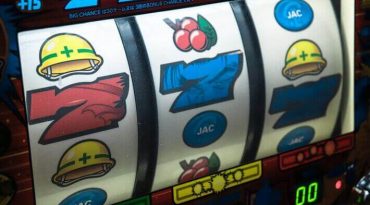SHARE
A Beginner’s Guide to Poker Bankroll Management in 2021

Becoming a great poker player takes time and a lot of work, and there are many strategies that can help you become better at poker. However, being successful at poker takes a lot more than just being good at it, and poker bankroll management is one of the essential skills that every poker player should master.
As the name suggests, bankroll management is all about managing the money you use to play poker with. Even though it won’t help you become good at poker directly, it will enable you to put your poker skills to the test and, hopefully, make a profit.
If you are serious about poker, learning how poker bankroll management works will be highly beneficial for you and your poker career, which is what our article is all about.
To help you learn more about it, we will show you how bankroll management works, its benefits, and how to set your initial bankroll.
Quick Facts About Poker Bankroll Management
- Your poker bankroll is all the money you are prepared to lose playing poker.
- Building a poker bankroll takes time.
- The best way to build an online poker bankroll is by grinding.
- Poker Bankroll Tracker is one of the best poker bankroll management apps that helps you analyze your poker data and helps manage your bankroll.
- Your bankroll changes depending on your skill, the stakes, your win rate, and much more.
- You should aim to have 100 to 120 buy-ins.
- One shouldn’t spend more than 2% of your entire bankroll for an MMT buy-in.
- You need to be a winning player to take advantage of poker bankroll management strategies.
- Learning when to move up in stakes is just as important as learning how to move down in stakes.
- You won’t be able to turn $10 into $1,000 overnight, and managing your expectation is just as important as managing your bankroll.
What Is Bankroll Management in Poker
Your bankroll is the money you have set aside for playing poker and the money you are prepared to lose. This can include the money you plan on spending per game, session, per month, or all the money you set aside specifically for gambling. However, make no mistake because that doesn’t include your life savings, the money you are paying the bills with, or anything of a sort.
Simply put, bankroll management in poker refers to managing the sum you are willing to risk each time you play poker. It is the money you use for gambling, and in some rare chances, it includes expenses when you are staying in a hotel during a big land-based tournament event, for example.
There are several different benefits of having a dedicated bankroll. The first and the most evident is that you will always have enough money to play poker with. Of course, this only applies if you strictly adhere to one and only rule regarding bankroll management for poker, which is to never go over the limit you initially set.
Not only will this ensure that you will have enough money to play with, but it will also help you avoid spending more than you can afford.
Additionally, a bankroll limit will also help you determine where your limits are and what buy-ins you can and should be playing. This will come in handy if you play a lot of online poker or you regularly partake in multi-table tournaments (MTTs).
How Poker Bankroll Management Works
Before you can set up your bankroll, you should know that a poker bankroll is not static. There is no magic number that fits everyone, and your bankroll will change over time. In fact, the biggest mistake that you could make is to use the same poker bankroll management strategy for every poker format there is. For example, you should aim to have around 40 to 50 buy-ins for a single session for cash games, while the strategy for MTTs is entirely different.
Apart from adjusting your bankroll based on the stakes and minimum buy-in, there are many more different aspects to consider when deciding your bankroll.
Your initial bankroll will mostly depend on your financial circumstances. However, even if you can afford to lose millions of dollars without it even making a dent in your bank account, it doesn’t mean you should. Instead, focus on improving your skills and building a poker bankroll.
For that reason, you should adjust your bankroll to fit your poker skills. The best way to accomplish this is to start small and evaluate how proficient you are at poker. Once you know where you stand, it will be much easier to know how much money you should set aside for playing it. The easiest way to do that is to find or create a poker bankroll management chart, and use your average win rate to determine your bankroll.
For example, if your average win rate is 25bb/100, you should aim to have enough for around 20 buy-ins. However, if your win rate is only 3bb/100, you will need a lot more buy-ins, and we recommend having a bankroll big enough for around 100 buy-ins.
By being able to read poker bankroll management charts and assess your poker skills based on your win rate, you will limit your losses and also learn how to adjust your bankroll in the future. Additionally, it will also help you adjust your bankroll based on the skills of the players you are playing against.
As we mentioned, your bankroll should be flexible, and stakes can play a big part in deciding your bankroll. In general, a good rule of thumb to follow is to have enough for 100 to 120 buy-ins. However, once you learn how to build a poker bankroll and eventually move up the stakes, you should also adjust your bankroll accordingly.
Since higher blinds mean more risk and bigger variance, you should plan on having enough for around 150 buy-ins. In contrast, according to what we just mentioned, if you know that you are playing against weaker players, you can get away with a smaller bankroll and have less than the recommended number of buy-ins.
When it comes to MTTs or sit-n-goes, calculating your poker tournament bankroll is slightly different, and you should aim to spend no more than 2% of your bankroll per any buy-in. As far as re-buys go, we don’t really recommend them. However, if you are really keen on it and think that you can make a profit, make sure that the total cost of re-buys, add-ons, and your initial buy-in doesn’t add up to more than 5% of your total bankroll for a single MTT.
How to Build a Poker Bankroll
Determining your bankroll is a correlation between the blinds, the cost of signing up for a tournament, your and other players’ skills, and your personal finance. As we mentioned earlier when discussing how bankroll management works, your bankroll will be flexible most of the time, and you should always start small. However, as you become a winning player and start building a poker bankroll, you will eventually move up in stakes rather than playing $0.01/$0.02 blinds forever.
However, while knowing when to move up the stakes is important, it is crucial to also learn how to move down in stakes and regain your confidence and build up your bankroll again, especially if you hit a dry spell. To show you just how important this is, we can take a look at Doug Polk’s $10,000 bankroll challenge.
Namely, Doug Polk is one of the best heads-up players, and he launched a poker bankroll management challenge in 2016 where he attempted to turn $100 into $10,000. From his challenge, we’ve noticed four key things that every serious poker player should be aware of.
1. Be Adaptive
If you’re not familiar with Polk, he has 3 WSOP bracelets under his belt and is widely regarded as a heads-up no limit hold ’em specialist. However, he quickly noticed that his best courses of action were Sit & Go’s and tournaments.
Rather than being stubborn and trying to play cash games, he realized that the best way to build an online poker bankroll was to give up trying to play heads up cash games and play the format that was going well for him and suited his bankroll at the time the best.
2. Play Within Your Bankroll
The second lesson that we learned from Doug’s bankroll challenge was even more important. Eventually, Polk got tired of slowly building a poker bankroll by playing micro stakes and decided to play to his strengths by skipping a few steps and jumping from NL4 to NL20 heads-up cash games.
With the much higher blinds and a few unlucky hands, he ended the session by losing $269, which was more than 70% of his entire bankroll at the time.
While this was only an experiment for Polk, someone else losing most of their bankroll might put their poker career to a long halt and significantly slow down their progress. For that reason, it is of the utmost importance that you always play within limits.
3. You Can’t Build a Bankroll Overnight
Additionally, we also learned that building a poker bankroll takes time, and you should manage your expectations before you even start playing. Instead of expecting to turn $5 into $500 overnight, you should be overjoyed if you manage to turn $5 into $7.
In other words, patience is the key, and the best way to build an online poker bankroll is through slow and tedious grind and playing micro stakes, ensuring that you never run out of fuel until you are ready to move up the stakes.
4. Invest In Your Bankroll
Another mistake to avoid is to never take great sessions and extra profit for granted. Rather than squandering your profits, you should be careful what you do with all the “extra” you made. While it may be tempting to move up the stakes and play a few big hands, you should remind yourself of what happened during Polk’s poker bankroll management challenge.
Instead, the best course of action would be to invest the profits into increasing your bankroll. After all, that’s what your bankroll is in the first place, an investment that allows you to make even more profit with your poker skills.
Online Casino and Poker Site Bonuses
Before you start playing, one of the ways to substantially increase your initial bankroll is through online casino and poker site welcome bonuses. These bonuses can give a great boost to your poker tournament bankroll or bankroll in general and are excellent for anyone who knows how to use the most out of them.
However, as is the case with most casino and poker bonuses, they come with wagering requirements. In other words, while you will be able to use the money to play poker, you won’t be able to withdraw your winnings until you fulfill the wagering requirements, which means gambling the bonus money several times over.
Poker Management Tools and Apps
As we’ve mentioned earlier, having a bankroll won’t do you much good if you lack the skills to make use of it, and one of the best ways you could do to rapidly advance your poker career and improve your poker skills is to learn how to analyze your games with the help of various poker management tools. By being able to go through your statistics, you will learn how to improve your game while also getting a better insight into how to set or adjust your bankroll.
The most basic way of doing that is to simply have an Excel or Google Docs poker bankroll spreadsheet where you will manually enter information, such as how much profit you made, how much time you spent playing, and much more.
Naturally, the more information you input, the more detailed your spreadsheet will be, and the better analysis you can make. Even though it is entirely free, this way of collecting information and compiling it into useful data can be time-consuming, and it is time you could spend grinding and increasing your bankroll.
A more efficient way of doing the same is through various poker bankroll management apps. Some of the best apps on the market are Live Poker Manager, Poker Income Tracker, and Poker Bankroll Tracker. Even though apps like these cost money, they are excellent at keeping track of your wins and losses, the time spent playing, hands played, and can even generate graphs that you can use to analyze your games or share with other poker players for comparison.
Summary
As you can see, there are many benefits of learning how bankroll management in poker works. Granted, while having a poker bankroll won’t help much if you are inexperienced and without proper poker skills to make use of the bankroll, it will help ensure that you are not overspending and wasting your money while learning the ropes.
For that reason, apart from poker bankroll management, one of the most important things to do is learn how to analyze your games. Not only will this help when determining your bankroll, but it will also help you find which poker format works out the best for you and your bankroll. Naturally, as you improve skill-wise and move up in the stakes, you will be able to easily adjust your bankroll on the fly.
However, the most important thing to remember is that being successful at poker requires good discipline and solid casino sites. Managing your bankroll will teach you precisely that, which is just another reason why learning poker bankroll management is essential for every serious poker player.



